Earlier this year, I reviewed the Fossil Sport, a device that I loved so much when I was briefed on it that I went out and bought it. And while I praised it in the review, many criticized the multiple performance issues.
Enter the Fossil Gen 5 Smartwatch. It comes in a beautiful chassis, but performance is just so much better, mainly because it has double the RAM. It also includes Qualcomm's Snapdragon Wear 3100 chipset, which has new power management features. It's also just a lovely device, and it does the things that are important for a smartwatch when you want it to.
Specs
| Chipset | Qualcomm Snapdragon Wear 3100 |
|---|---|
| Display | 1.28 inches, 328ppi, AMOLED |
| Storage | 8GB |
| RAM | 1GB |
| Sensors | Accelerometer, Altimeter, Ambient Light, Gyroscope, Heart Rate, Microphone, NFC, Untethered GPS |
| Body | 44mm, 12mm thick, stainless steel |
| OS | Wear OS |
| Price | $295 |
To be honest, Fossil really doesn't provide very good spec sheets. Just like when I reviewed the Fossil Sport, it's impossible to find things like how much it weighs and other details.
Day one
Design and display
The Fossil Gen 5 Smartwatch, like the company's main wearable lineup tends to be, is one of the sexiest smartwatches on the market. It comes in a stainless steel casing with angled edges around the round screen and flat sides.
I was sent the Carlyle edition, although there's also the Juliana, which seems to be more geared toward women. The Juliana is available in different colors like Rose Gold, and with different case styles.

There are also three buttons on one side. The top one launches the Fossil app by default, the bottom one will let you start a workout with Google Fit, and the middle one is the digital crown. That main button will let you toggle between the app drawer and the main watch face, and you can also turn it to scroll.

On the bottom, you'll find two rings for charging, along with the heart rate sensor. The charging rings are actually really cool, because you can connect the two pins on the charger to any part of them. Unlike some competitors, Fossil does not use wireless charging in its smartwatches, and in most cases, I wouldn't be too happy with that. Smartwatches that have pins underneath the device can have charging issues because those pins can get dirty over time. It's not as much of an issue with so large of a charging surface area.

But back to the stunning design, it's worth noting that this is a fashion smartwatch. It's designed to be beautiful, with its metallic stainless steel chassis. You can compare that to something like the Fossil Sport, which is designed to be surprisingly lightweight, and for more active use cases. In other words, you'll want to be aware of what you're actually buying this for before you choose which one you get. Or you can buy both. I certainly wouldn't hold it against you.
The model that Fossil sent me includes a stainless steel link band, which also looks great. I'm just not a fan of stainless steel link bands to begin with. Arm hairs get stuck in them, and so on. For one thing, you can choose to buy it with a silicone strap or a leather strap, and you're still paying the same $295 for the watch. Fossil doesn't charge a premium for the band you want, like Apple does.
It's also pretty cheap to buy new bands, which Fossil sells plenty of. A new silicone strap only costs $25, and the most expensive one I could find is the $50 Smoke Steel Mesh Bracelet. And really, you can use any 22mm band. They're easy to replace, with a simple pin mechanism.

The screen is a 1.28-inch AMOLED with a 328ppi pixel density. OLED is something that's necessary in wearables, and it's pretty common. The deal with OLED is that pixels can be turned off, so you get true blacks. This is as opposed to a regular LCD, which is entirely backlit. An LCD would be a real issue for something that's constantly running an ambient display, as Wear OS does.
One issue I did have is that the ambient display is a bit hard to see in direct sunlight. That's OK though, since you don't want it to suck down battery life with a bright always-on display. You can also always raise to wake the screen, and then it's fine. Also, both the ambient display and raise-to-wake were off by default, which was just weird. Those are key features.
I really love the design of this watch though. At 12mm thin, it's not too thick or bulky. So not only is it stylish, but it's comfortable to wear.
Wear OS
Originally called Android Wear, Wear OS predates Apple's watchOS, but it's much less sophisticated. Honestly, Wear OS isn't very good, but if you're an Android user, there aren't many options. One of my favorite smartwatch features is the ability to use turn-by-turn directions with Google Maps, and that's something that you can't do with many third-party platforms, platforms that don't have a Google Maps app.

There are many issues that I have with Wear OS, such as the fact that it doesn't know to put the watch on do not disturb when you take it off. There's even a setting for it, but half of the time, it just didn't work. And settings are all over the place. Some are in the Settings app, some require you to use the Wear OS app on your phone, and there's no easy way of telling what's what. And sadly, I hear that Google isn't putting a lot of work into Wear OS anymore, something that's probably obvious given the product.
Swiping down from the top gives you quick settings, such as airplane mode, battery saver, do not disturb, and Google Pay. Swiping up brings you to your notifications, which is kind of weird since your phone will work differently. Swiping in from the left gets you to Google Assistant, something that I never use, although the Gen 5 Smartwatch does have a microphone and a speaker now, so you can talk to it.
Swiping in from the right brings you to Tiles, a new feature for Wear OS. The three that are set by default are your next event on your calendar, the weather forecast, and Google Fit goals. You can also set Tiles for a timer, your heart rate, headlines, and heart points.
It's a nice way to get quick information, or for quick actions like setting a timer. You can use up to five Tiles, which must be set in the Wear OS app. You can also add complications to your watch face, another way of getting quick information, so you might want to set a weather complication, and then you don't need it as a Tile.

Wear OS is filled with inconsistencies and many parts of it are just rough. But I find it to be acceptable. It comes down to what you want from a smartwatch. A smartphone is the most personal of personal computers, and many people spend more time on it than any other type of computer. A smartwatch is not that.
Obviously, the core functionality of a smartwatch is to tell the time, and the Fossil Gen 5 Smartwatch does that well, offering a variety of watch faces. You can add third-party ones as well. The Snapdragon Wear 3100 chipset adds some new power management capabilities that let you have color on the ambient display, and even a moving second hand, all without sucking down battery life. Unfortunately, it's actually kind of hard to find a watch face that actually supports the new chipset.
The secondary functionality would be to get notifications without having to take out your phone. Again, that's something that Wear OS does well. It's not as pretty as Apple's watchOS, but it gets the job done.
While there really aren't any good apps, Wear OS does come with its own Google Play Store. It's good at helping you to navigate to apps that coincide with ones on your phone, ones you've downloaded before, and ones that are recommended for you. The inclusion of a Play Store helps it to be a standalone device, which is nice considering that there is a cellular model.
It's really just a clunky operating system. One thing that I enjoy about the Apple Watch is that when you put your phone or your watch on do not disturb, they're both on do not disturb. An iPhone and an Apple Watch work seamlessly together, and that's just not the case with Android and Wear OS. But if you don't want to be tied down to an iPhone, Wear OS is the best of a bad situation.
Performance and battery life
I've been pretty consistent about criticizing Qualcomm's hardware for wearables. The core architecture of its chipsets hasn't changed since day one. Original Android Wear devices used the Snapdragon 400, a chipset for smartphones since wearables weren't a thing yet. Then came the Snapdragon Wear 2100, and now the Snapdragon Wear 3100.
All three of those use ARM Cortex-A7 in their main cores, so performance improvements over the years have been trivial. The key advantages of the Snapdragon Wear 3100 are in power management. It uses Qualcomm's new big-small-tiny architecture, basically big.LITTLE for phones scaled down to smartwatches. This unlocks features that I mentioned above, like color and a moving second hand on the ambient display.

But while performance on the Fossil Sport was frankly terrible, the Gen 5 Smartwatch is as smooth as butter. Surprisingly smooth, in fact, given that they use the same chipset and all of the things I just said about it. The reason that the Gen 5 Smartwatch does so much better is because it has a full 1GB of RAM, compared to the Fossil Sport's 500MB.
I didn't even realize that I've never reviewed a Wear OS device with 1GB RAM. Both the Huawei Watch 2 and the LG Watch Sport packed 768MB RAM. The additional memory makes a real difference.

Battery life was a mixed bag. I don't expect much of smartwatches that don't do sleep tracking. I just want them to get from when I wake up until I go to sleep. And sometimes the Gen 5 Smartwatch doesn't do that. Oddly, it's particularly bad on the first few days of use. The first time I put it on, it dropped from 100% to 40% in three hours. I haven't had that issue since.
Occasionally though, it goes into battery saver mode in the evening, which is pretty annoying. It pretty much only lets you see the time, turning off the ambient display and raise-to-wake functionality. Moreover, you have to manually turn those settings on again. It's not automatic when the device is charged.
Fossil does have a solution though, or at least as good of a solution as you can get. There are four different battery modes you can set: Daily, Extended, Time Only, and Custom. Daily is the standard, everything is turned on. Extended turns off some features so your watch can get through the weekend, and Time Only shows just the time, promising to get you through weeks.

The Custom setting is particularly useful, because you can choose which features to turn off. You can leave on things like Bluetooth, the always-on screen, and tile-to-wake while turning off the speaker, Wi-Fi, GPS, NFC, and "OK Google" detect. Or you can set any combination of those.
Basically, performance is fantastic, exceeding my expectations. Battery life leaves something to be desired though, although you can play around with the settings. I wish it was a bit more consistent with making it through the day.
Conclusion
I mentioned earlier that Wear OS is the best of a bad situation, but the Fossil Gen 5 Smartwatch is the best of Wear OS. It has a sophisticated design that makes it look like a real watch, one that you'd actually want to be seen wearing.

The downsides are, of course, the inconsistencies that come with Wear OS, and also the inconsistent battery life.
But I absolutely love it. And there's a lot of value in the $295 price tag. I compared this to the Apple Watch in a few places because it's the most popular smartwatch, and it's refined to being one of, what I feel, Apple's last good products, along with iPad and Apple TV. But Apple overcharges for everything. If you want anything other than a silicone strap and an aluminum chassis, expect to pay hundreds of dollars more.
That's not the case with the Fossil Gen 5 Smartwatch, which comes in a stainless steel chassis and whatever strap you want for $295. And if you want more straps, Fossil's most expensive one is the same price as Apple's cheapest. And I'm not comparing apples to oranges (fossils?) here. Wear OS does work with iOS, albeit in a somewhat limited capacity. Fossil is promising a solution to allow you to make calls from the Gen 5 Smartwatch when paired with an iPhone, although that's coming later this year.
Another great thing about the Gen 5 Smartwatch is performance. It's just a smooth experience, something that I've not seen in a Wear OS smartwatch, at least in recent years. It's just a fantastic device, with way more pros than cons.
If you want to check out the device on Amazon, you can find the Carlyle here. Or if the Juliana is more your style, you can find that here.

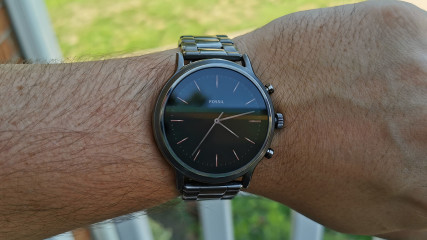
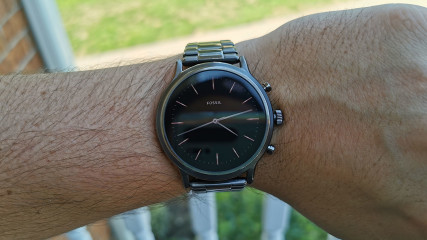
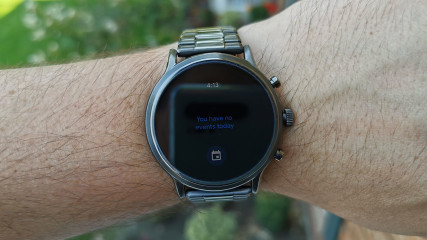

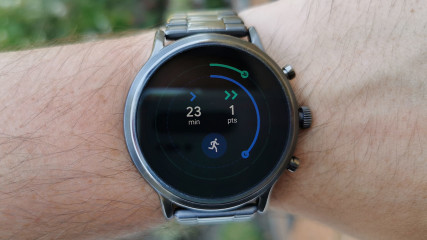
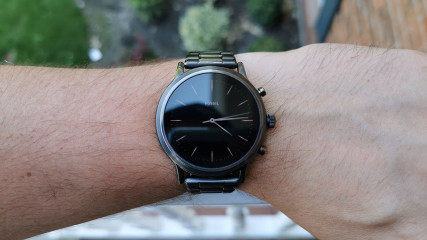
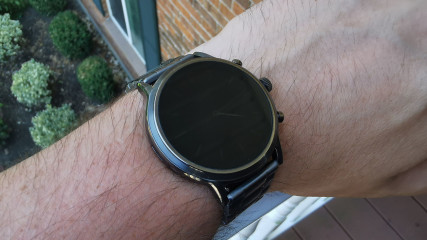

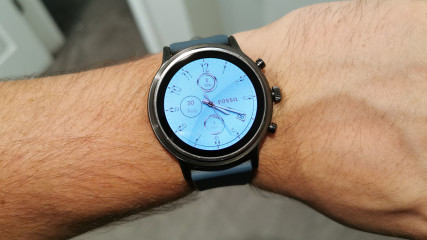
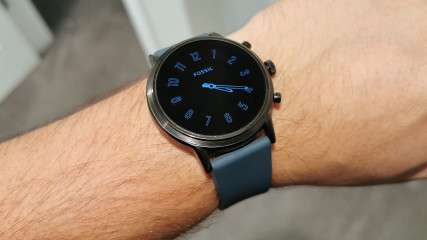



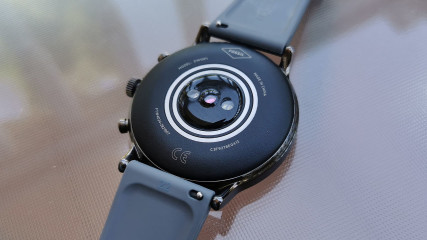












6 Comments - Add comment